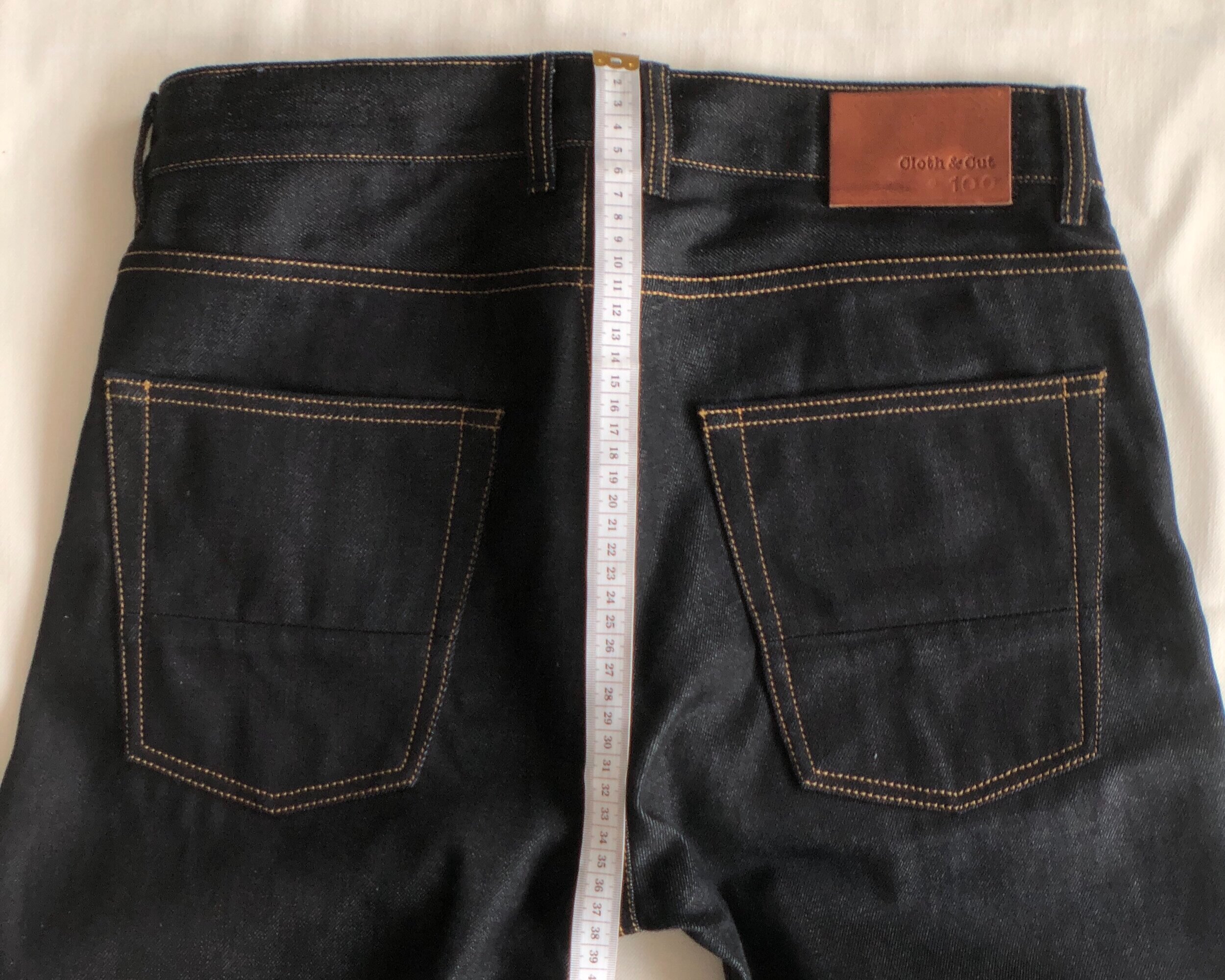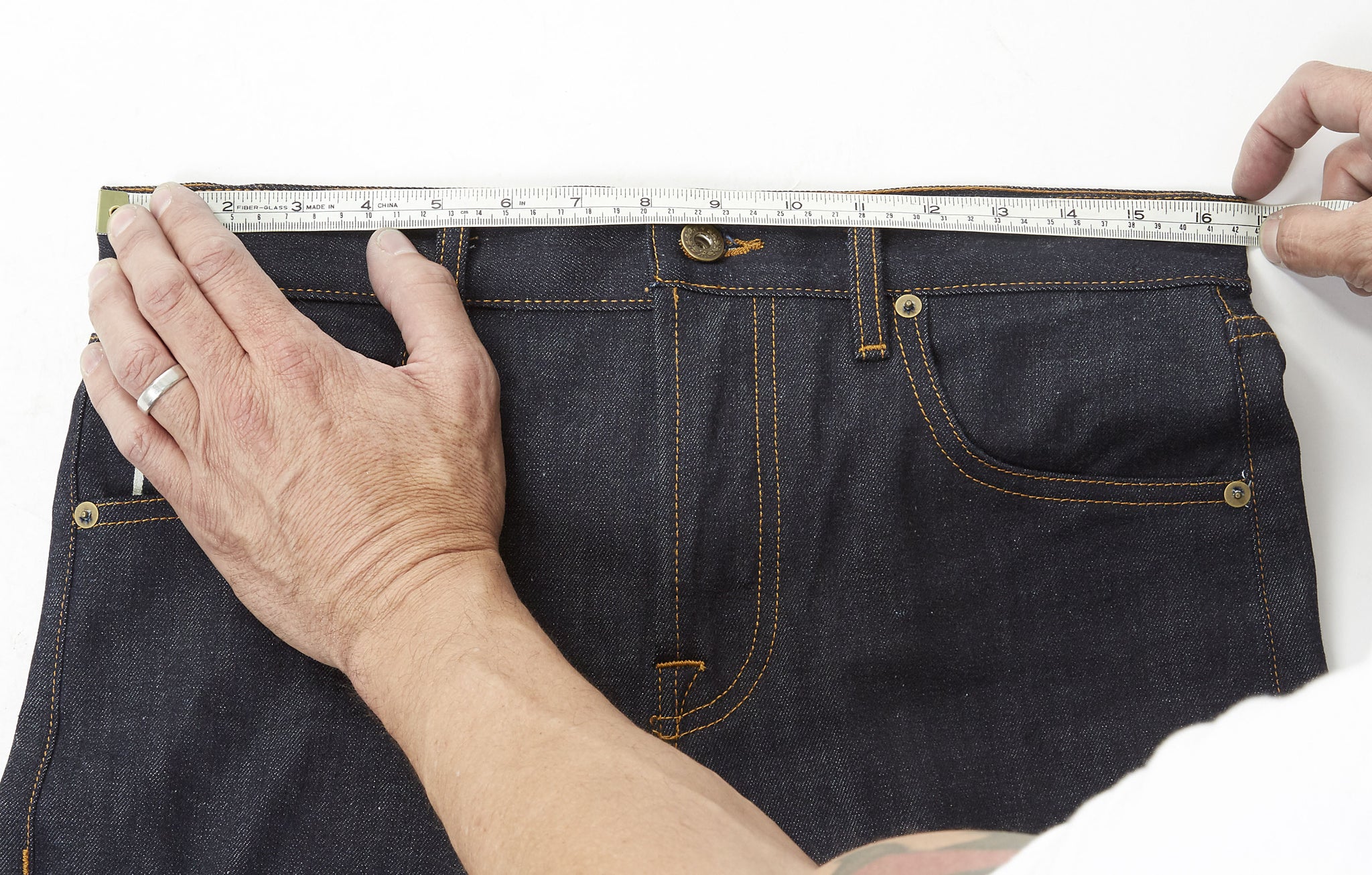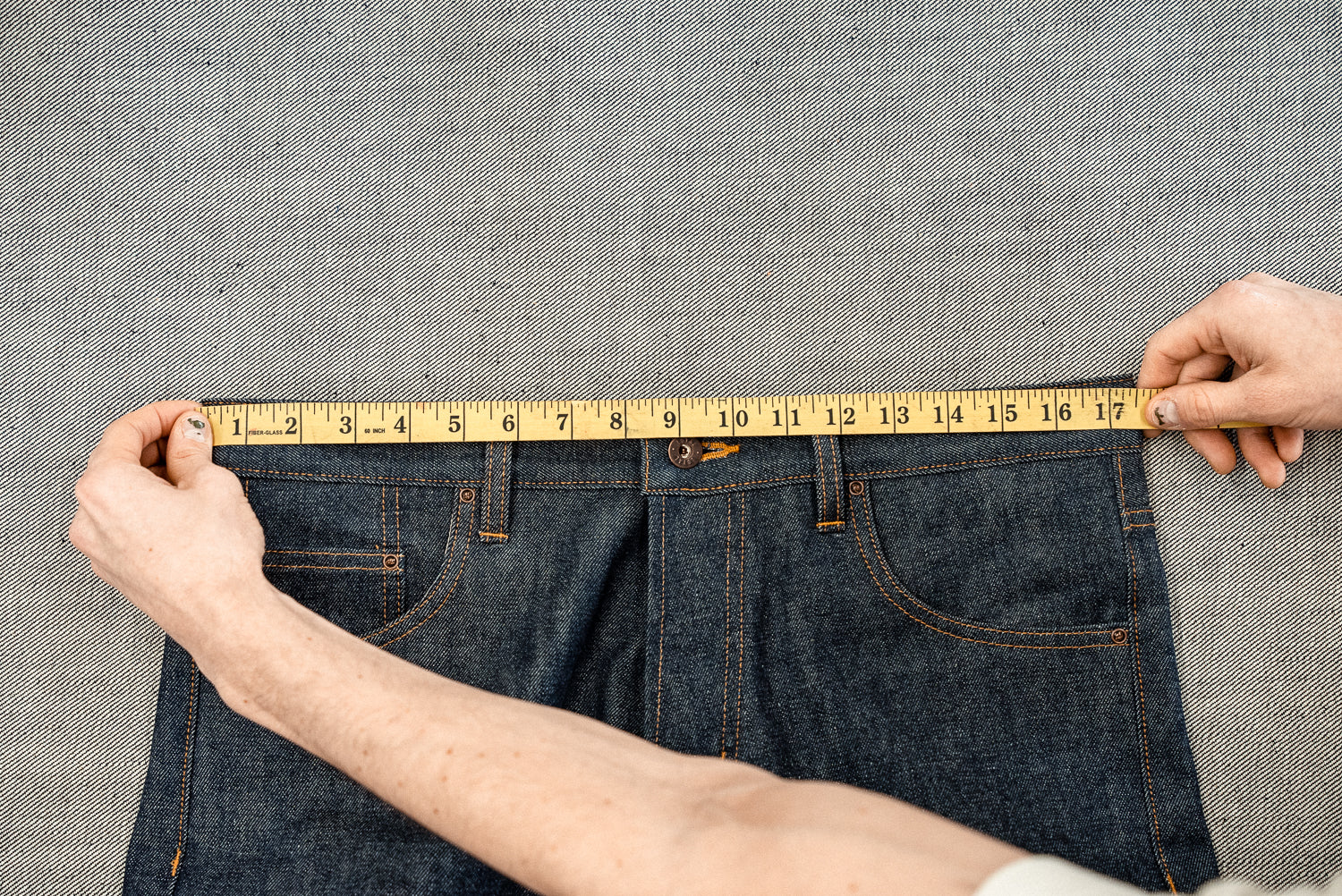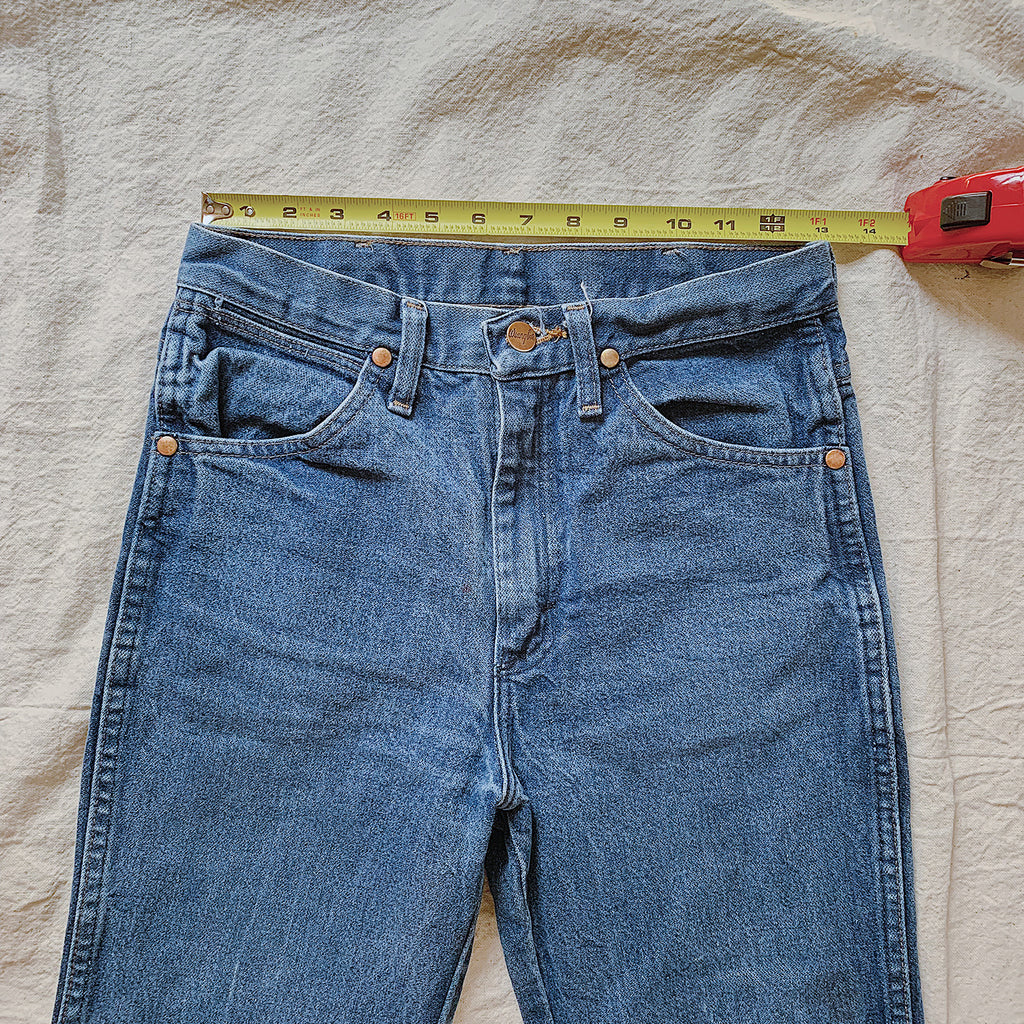Introduction
Measuring your waist for jeans is a straightforward process that can help you find the perfect fit, ensuring both comfort and style. Here’s a detailed guide on how to accurately measure your waist for jeans:

1. Prepare Your Measuring Tape
First, locate a flexible measuring tape, ideally the kind used for sewing or body measurements. Avoid using stiff or metallic tapes meant for construction, as they won’t conform well to your body’s contours.
2. Wear the Right Undergarments
For the most accurate measurement, wear the type of undergarments you plan to wear with your jeans. This could be anything from skin-tight underwear to shape-wear, depending on your preference. It’s important because different undergarments can affect how jeans fit around your waist.
3. Find Your Natural Waist
Your natural waist is the narrowest part of your torso, usually located just above your belly button and below your ribcage. This point is where your jeans will likely sit, especially for high-rise styles. Stand straight with your feet together and take a deep breath in and out to help locate this natural indentation.
4. Position the Tape Correctly
Place the end of the measuring tape at the front of your natural waist, making sure it’s parallel to the floor. Wrap it around your body, ensuring the tape is snug but not too tight. You should be able to slide two fingers comfortably under the tape for a bit of breathing room.
5. Read and Record the Measurement
Take note of the number at the point where the tape meets its end, rounding up to the nearest half-inch or full inch, depending on the sizing chart you’re using. This is your waist measurement for jeans.
Tips for Accuracy:
- Don’t Suck In: While it might be tempting to suck in your stomach for a smaller measurement, resist the urge. You want your jeans to fit comfortably without being restrictive.
- Consistency Matters: Make sure to measure yourself at the same point each time for consistency. Small variations in placement can lead to different measurements.
- Re-measure: It’s a good idea to take the measurement twice to confirm accuracy. If the numbers differ slightly, use the average.
- Consider Size Variations: Keep in mind that different brands and styles of jeans may have varying sizing standards. Always check the specific brand’s size chart and consider factors like stretch and desired fit (e.g., tight, loose, or regular).
- Body Changes: Remember that your body measurements can change over time due to various factors such as weight fluctuation, muscle gain, or even the time of day. It’s a good practice to re-measure before purchasing new jeans, especially if it’s been a while.
By following these steps, you’ll have a solid foundation for selecting jeans that fit you perfectly, enhancing both your look and confidence. Remember, finding the right fit is more important than the number on the tag, so prioritize comfort and how the jeans make you feel.

Additional Tips for Jeans Sizing and Fit:
Understanding Rise:
When shopping for jeans, it’s crucial to consider the rise, which refers to the length from the crotch seam to the top of the waistband. Different rises can drastically affect how jeans fit and flatter your figure. The three main types are:
- Low-Rise: Sits below the natural waistline, typically favored for a casual, relaxed look. However, they might not be comfortable for everyone, especially when bending or sitting.
- Mid-Rise: Hits at the natural waist or slightly below, offering a balanced fit that works well for most body types. This is a versatile choice suitable for everyday wear.
- High-Rise: Extends above the navel, providing extra coverage and often creating a slimming effect. High-rise jeans are great for tucking in shirts and can be more comfortable for those who prefer more support around the waist.
Consider the Fit Through the Hips and Thighs:
Your hip and thigh measurements are just as important as your waist measurement when it comes to finding the right jeans. If you have curvier hips or larger thighs, you might need to go up a size to accommodate this while still maintaining the right waist fit. Many brands offer different fits like “curvy” or “straight” to cater to these variations.
Length and Hem:
Jeans come in various inseam lengths to suit different heights. Measure from your crotch seam down to the ankle bone or wherever you prefer your jeans to end, and compare this to the brand’s size chart to determine the correct length. If you fall between sizes, consider opting for a longer length that you can easily tailor to your height.
Stretch Factor:
Modern jeans often contain spandex or elastane for added stretch. The amount of stretch can affect how the jeans fit over time. If you’re between sizes or prefer a snugger fit, a pair with more stretch might be the way to go. Conversely, if you want a classic, less forgiving denim feel, look for jeans with minimal stretch.
Try-On and Move Around:
Online shopping has made buying jeans more convenient, but nothing beats trying them on in person. When possible, visit a store and try on several pairs, moving around and sitting down to ensure they’re comfortable and flattering from all angles. If you must buy online, check the return policy before purchasing, so you can exchange them if needed.
Embrace Your Body Type:
Lastly, remember that everyone’s body is unique, and what looks great on one person may not on another. Focus on finding jeans that accentuate your best features and make you feel confident. Don’t be discouraged if your size varies across different brands – it’s completely normal. The right fit is about how the jeans make you feel, not just the numerical size.

Understanding Jeans Fit Terminologies
Once you’ve measured your waist accurately, understanding common fit terminologies used in jeans can further assist you in finding the perfect pair:
1. Rise
This refers to the length from the crotch seam to the top of the waistband. Different rises can significantly impact how jeans fit:
- High-Rise: Sits at or above the navel. Great for those who want more coverage or a retro look.
- Mid-Rise: Sits at the natural waistline. Offers a comfortable balance and versatility.
- Low-Rise: Sits below the natural waist, usually around the hip bone. More casual and trendy but less supportive.
2. Fit
The overall silhouette of the jeans:
- Skinny: Tight through the thigh, knee, and ankle.
- Slim: Close-fitting but with a bit more room than skinny jeans, especially through the thigh.
- Straight: Fits straight from the knee down, offering a classic, relaxed look.
- Bootcut: Flares slightly from the knee, designed to accommodate boots.
- Relaxed: Loose throughout, providing maximum comfort.
3. Stretch
Denim can range from no stretch to high stretch. Knowing your preference can help in choosing jeans that feel comfortable all day:
- Non-Stretch: Traditional denim with little to no give. Provides a structured look but may feel restrictive.
- Stretch: Contains a percentage of elastane or spandex for added comfort and flexibility.
- Super Stretch: High elasticity, allowing for a snug fit without feeling tight. Ideal for those who prefer a fitted look with comfort.
Trying On Jeans: Additional Tips
- Sit Down and Move Around: Before committing to a pair, sit, squat, and walk around in them. This helps ensure the jeans remain comfortable in various positions.
- Check the Back Gap: If the waistband gaps at the back when you stand straight, the jeans might be too big at the waist. Look for a smaller size or a different cut that better suits your body shape.
- Length Matters: Consider the inseam length, especially if you plan to wear your jeans without cuffing or altering. The hem should ideally rest at the top of your shoes or slightly above, depending on the style.

Final Thoughts
Remember, fashion is personal, and what fits one person perfectly might not suit another. Don’t be discouraged if your usual size varies across brands. The key is to focus on how the jeans make you feel and look rather than sticking rigidly to a number. By taking accurate measurements, understanding fit terminologies, and trying jeans on with intention, you’ll be well-equipped to find that perfect pair that complements your unique body shape and personal style.

